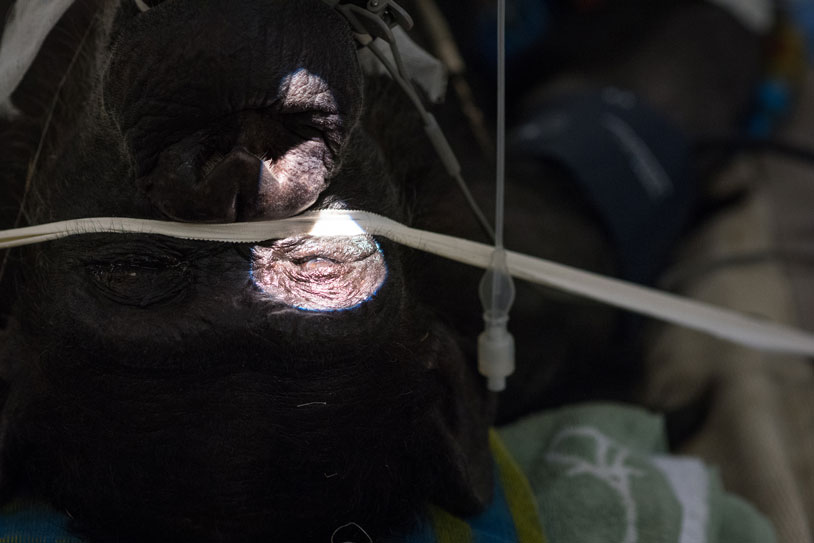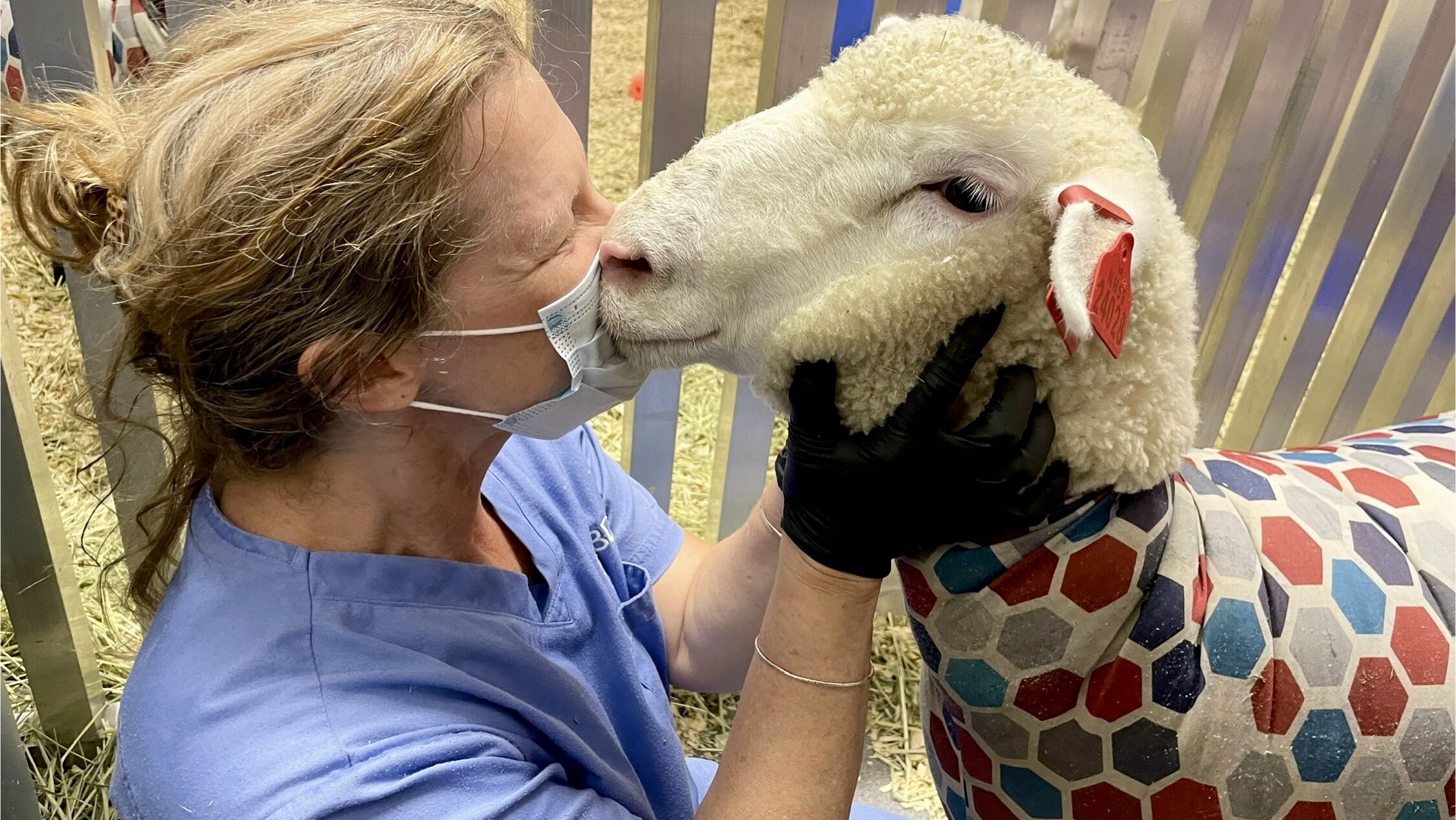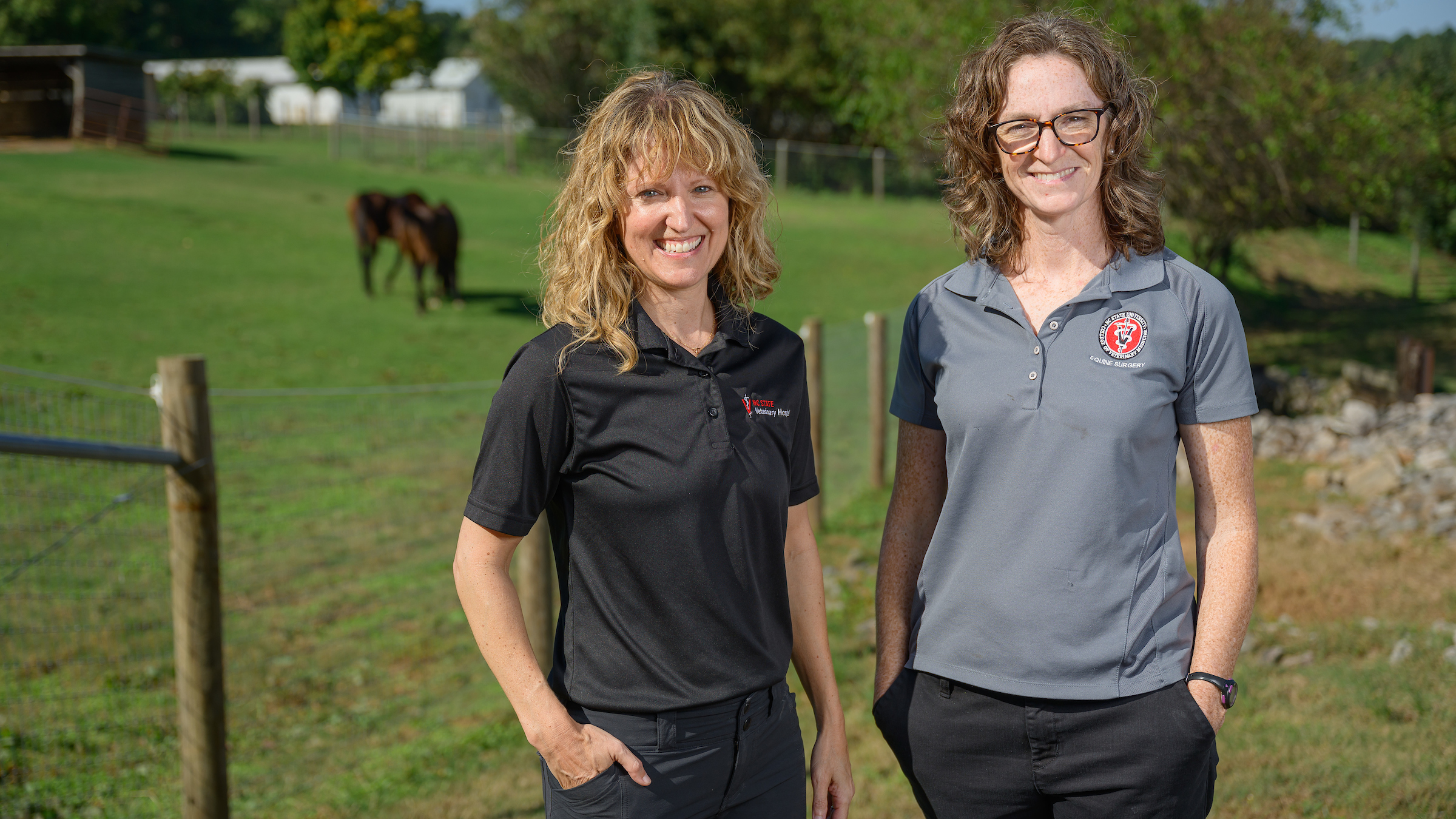For Ruthie the Chimp, Clear Sight From Expert Hands

In about 20 minutes, we’ll arrive at the North Carolina Zoo and, in less than two hours, Ruthie the chimpanzee will be on the road to seeing clearly once again.
Brian Gilger, professor of ophthalmology at the NC State College of Veterinary Medicine and his team has made this trip to Asheboro several times before. A cataract removal procedure is as common for animals as it is for humans.
But there’s dashes of excitement in Gilger’s voice and a visible eagerness in his team to get out of this van and into the zoo’s Hanes Veterinary Medical Center.
For Gilger, even after 20 years of working at the CVM and repeated trips to the zoo for specialized surgeries, it’s hard to get tired of this kind of work.
“Working with the big apes — this is it. It’s so interesting,” says Gilger as the van slowly navigates the winding roads near to the veterinary medical center adjacent to the zoo. “If this chimpanzee loses her vision, which she is on the way of doing, her whole social status in that troop is going to change. So this is a big deal, almost life or death for her.”


The zoo’s hospital is in a quiet, tree-lined area adjacent to the main zoo. Here, the surgery will take place and the zoo’s veterinary team will soon transport an anesthetized Ruthie, the 45-year-old matriarch of the zoo’s chimp troop, to the back loading dock.
As Gilger and his team — clinical technician Damian Launer, ophthalmology resident Whitney Young and ophthalmology research fellow Sara Smith — change into their scrubs, Katie Delk, the zoo’s senior veterinarian, and some of the zoo’s veterinary team awaits Ruthie’s arrival in a large prep room.
“She has one good eye, but she’s basically not able to see out of the other eye,” says Delk, who joined the zoo’s staff in August following her residency training at the San Diego Zoo. “Chimps have a really important social structure, so if she’s not able to interact with her cohorts in multiple ways that could hinder her quality of life.”
After removing the cataract, which requires a small incision in the cornea, the damaged lens will be replaced with a lens that was specially made for Ruthie and donated by An-Vision in Salt Lake City.
It isn’t long before vans arrive behind the center. Jb Minter, the zoo’s chief veterinarian and CVM alum, and his team – zoological medicine resident Sarah Cannizzo and several clinical technicians get Ruthie placed on a gurney for transport into the prep room.
A dozen staff and veterinarians, including Kate Bailey, CVM clinical assistant professor of anesthesiology, all in scrubs and wearing masks and gloves, get Ruthie ready for surgery.


After about a half-hour, Ruthie is wheeled into a larger surgery room. Gilger takes a spot directly behind Ruthie’s head. He looks at her face, at the tiny white hairs peeking through on her chin.
He checks Ruthie’s eyes with a high-powered overhead microscope and hands it over to Young so she can get a look, too. Ruthie’s blood pressure is checked.
“Are you guys ready?” says Gilger. And Launer doesn’t hesitate to say, “yes.”
The surgery begins a little bit after 11 a.m. — the room is suddenly quiet and still. Gilger and Launer double-check a tray with surgical tools and anti-inflammatory eye drops are used on Ruthie’s eye. Down the table, zoo staff rub one of Ruthie’s hands and touch her fingers to make sure they are loose and don’t tense up.
Even under anesthesia, muscles can move.


Gilger looks down at Ruthie again and pats her chin. Wrinkles in the corner of his eyes convey a small smile under his mask. After a plastic sheet is placed over Ruthie’s head and upper torso, Gilger makes the first incision as Young watches over his shoulder. The lights are off, and the glow of the microscope shines down on Ruthie’s eye.
The cataract is removed in just five minutes. Gilger moves his fingers quickly yet delicately and precisely. The very small instruments require very fine movements. As Ruthie’s hand is rubbed, Gilger moves to suturing the incision.
It’s all over by 11:45 a.m.

After the surgery, the zoo’s veterinary team transported Ruthie to her indoor enclosure to recover. After awakening from the anesthesia, Ruthie was given antibiotics and analgesics via juice to help her eye heal.
Minter performed daily ophthalmic rechecks on Ruthie for the first three days, then every other day until the 10th post-surgery day. Gilger returned to the zoo two-and-a-half weeks later for a final check. Ruthie was then medically cleared.
“She is back with her troop and retaken her position as the retired matriarch,” says Minter. “But now she is able to take in her environment better.”
~Jordan Bartel/NC State Veterinary Medicine
- Categories:


